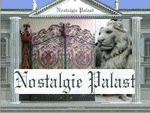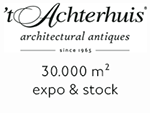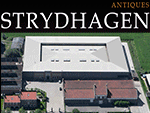Venus, Bacchus And Ceres, Giovanni Battista Paggi (genoa 1554 – Genoa 1627)
Giovanni Battista Paggi (Genoa 1554 – Genoa 1627)
Venus, Bacchus and Ceres (Parallel title: ‘Sine Cerere et Baccho, friget Venus’)
Oil on canvas
103 x 78 cm. - Framed 125 x 100 cm.
‘Sine Cerere et Baccho friget Venus’ is a Latin quotation from a comedy by Terence (2nd century BC), which became a popular Dutch proverb and which has given the title to our painting.
It literally translates as ‘Without Ceres and Bacchus, Love Fades’ and its simplest level of meaning, naturally ironic, is that carnal love needs food and wine to thrive.
In art it became a very popular theme especially between the 16th and 17th centuries in the Netherlands and in the circle of mannerist artists at the court of Emperor Rudolf II in Prague, as it offered the combination of a relatively intriguing classical reference and the opportunity to depict abundant nudity.
Apart from their decorative character, these paintings also had an erotic connotation, which was not unusual even in a culture dominated by the restrictions of the Counter-Reformation.
In our painting the seductive Venus, hungry and thirsty, is surrounded by the god Bacchus, wrapped in vine branches and passing her a bunch of grapes, and Ceres, with a crown of wheat and a cornucopia full of fruit; Love, at her side, is also hungry, as he tries to reach his mother's arm to greedily grab the grapes.
In particular, we are looking at a very famous iconographic invention by the painter Abraham Bloemart (c. 1600), which was already popular at the time thanks to an engraving by Jan Saenredam (1565-1607), then taken up by numerous artists such as J. Saenredam, Joachim von Sandrart, Bartholomäus Spranger
URL: https://www.lombardiabeniculturali.it/stampe/schede/MZ020-00017/
Also in Italy, especially in the northern part influenced by Flemish artists, the subject was particularly appreciated, as in our case by an artist of the Genoese school of the early 17th century. More specifically, the painting has been attributed to the Genoese artist Giovanni Battista Paggi (Genoa 1554 - Genoa 1627), who has reproduced it here in his typical refined style, well balanced with baroque exuberance.
In our case we find a pleasant combination of the typically Genoese style, the Flemish style, absorbed from the rich community of other northerners active in Genoa, and the Tuscan style, assimilated during his stay in Florence that lasted over a decade. We also find in it a Caravaggesque luminism that particularly highlights the theatricality of the scene.
The author of works with a mainly religious theme, his collection also includes splendid works of a mythological nature (see Venus in the Forge of Vulcan, private collection, or Venus and Cupid kissing, Banca Carige Art Collection).
ADDITIONAL INFORMATION:
The painting is sold complete with a tasteful frame, a certificate of authenticity and an iconographic description.
We organise and take care of the shipment of the purchased works, both in Italy and abroad, through professional and insured carriers.
If you wish to see this or other works in person, we will be happy to welcome you to our new gallery in Riva del Garda, at 18 Viale Giuseppe Canella. We look forward to seeing you!
Contact us for any information or to organise a visit, we will be happy to answer you.
Follow us also on:
https://www.instagram.com/galleriacastelbarco/?hl=it
https://www.facebook.com/galleriacastelbarco/
|




































